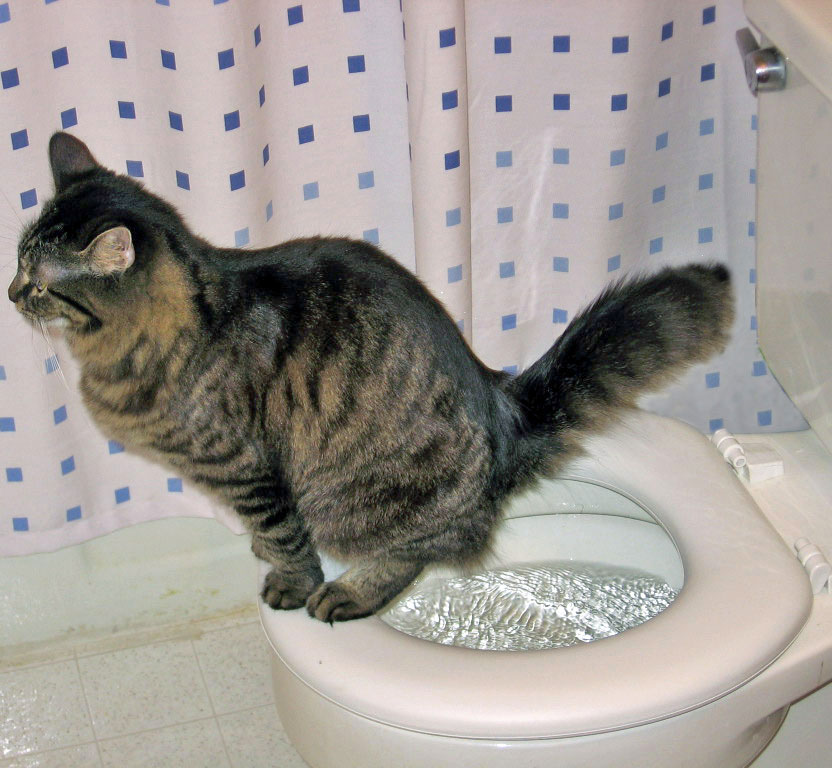Never Flush Cat Poop Down Your Toilet - Safeguard Your Pipes System
Never Flush Cat Poop Down Your Toilet - Safeguard Your Pipes System
Blog Article
Right here below yow will discover additional excellent information in relation to How to Dispose of Cat Poop and Litter Without Plastic Bags.

Intro
As feline owners, it's necessary to be mindful of just how we dispose of our feline good friends' waste. While it might seem practical to flush feline poop down the toilet, this practice can have damaging effects for both the setting and human wellness.
Alternatives to Flushing
The good news is, there are more secure and much more responsible ways to throw away feline poop. Consider the following choices:
1. Scoop and Dispose in Trash
The most common approach of taking care of cat poop is to scoop it right into a naturally degradable bag and throw it in the garbage. Be sure to make use of a devoted clutter scoop and take care of the waste immediately.
2. Usage Biodegradable Litter
Opt for naturally degradable pet cat litter made from products such as corn or wheat. These clutters are environmentally friendly and can be safely disposed of in the trash.
3. Hide in the Yard
If you have a backyard, consider hiding pet cat waste in a designated area away from vegetable gardens and water sources. Be sure to dig deep enough to prevent contamination of groundwater.
4. Install a Pet Waste Disposal System
Invest in an animal waste disposal system specifically developed for feline waste. These systems use enzymes to break down the waste, minimizing odor and environmental effect.
Health and wellness Risks
Along with ecological problems, flushing cat waste can likewise present health dangers to humans. Feline feces might contain Toxoplasma gondii, a parasite that can cause toxoplasmosis-- a potentially extreme disease, particularly for expectant ladies and people with weakened body immune systems.
Environmental Impact
Purging pet cat poop introduces hazardous virus and parasites into the water supply, presenting a substantial risk to water ecosystems. These pollutants can negatively affect aquatic life and concession water top quality.
Conclusion
Responsible animal possession prolongs past giving food and sanctuary-- it likewise includes appropriate waste administration. By avoiding flushing feline poop down the toilet and choosing alternate disposal methods, we can minimize our environmental footprint and safeguard human health.
Why Can’t I Flush Cat Poop?
It Spreads a Parasite
Cats are frequently infected with a parasite called toxoplasma gondii. The parasite causes an infection called toxoplasmosis. It is usually harmless to cats. The parasite only uses cat poop as a host for its eggs. Otherwise, the cat’s immune system usually keeps the infection at low enough levels to maintain its own health. But it does not stop the develop of eggs. These eggs are tiny and surprisingly tough. They may survive for a year before they begin to grow. But that’s the problem.
Our wastewater system is not designed to deal with toxoplasmosis eggs. Instead, most eggs will flush from your toilet into sewers and wastewater management plants. After the sewage is treated for many other harmful things in it, it is typically released into local rivers, lakes, or oceans. Here, the toxoplasmosis eggs can find new hosts, including starfish, crabs, otters, and many other wildlife. For many, this is a significant risk to their health. Toxoplasmosis can also end up infecting water sources that are important for agriculture, which means our deer, pigs, and sheep can get infected too.
Is There Risk to Humans?
There can be a risk to human life from flushing cat poop down the toilet. If you do so, the parasites from your cat’s poop can end up in shellfish, game animals, or livestock. If this meat is then served raw or undercooked, the people who eat it can get sick.
In fact, according to the CDC, 40 million people in the United States are infected with toxoplasma gondii. They get it from exposure to infected seafood, or from some kind of cat poop contamination, like drinking from a stream that is contaminated or touching anything that has come into contact with cat poop. That includes just cleaning a cat litter box.
Most people who get infected with these parasites will not develop any symptoms. However, for pregnant women or for those with compromised immune systems, the parasite can cause severe health problems.
How to Handle Cat Poop
The best way to handle cat poop is actually to clean the box more often. The eggs that the parasite sheds will not become active until one to five days after the cat poops. That means that if you clean daily, you’re much less likely to come into direct contact with infectious eggs.
That said, always dispose of cat poop in the garbage and not down the toilet. Wash your hands before and after you clean the litter box, and bring the bag of poop right outside to your garbage bins.
https://trenchlesssolutionsusa.com/why-cant-i-flush-cat-poop/

I was shown that report on How to Dispose of Cat Poop and Litter Without Plastic Bags through a friend on another web blog. Are you aware of somebody who is enthusiastic about How to Dispose of Cat Poop and Litter Without Plastic Bags? Feel free to promote it. I praise you for your time. Don't forget to stop by our site back soon.
Book Service Now Report this page